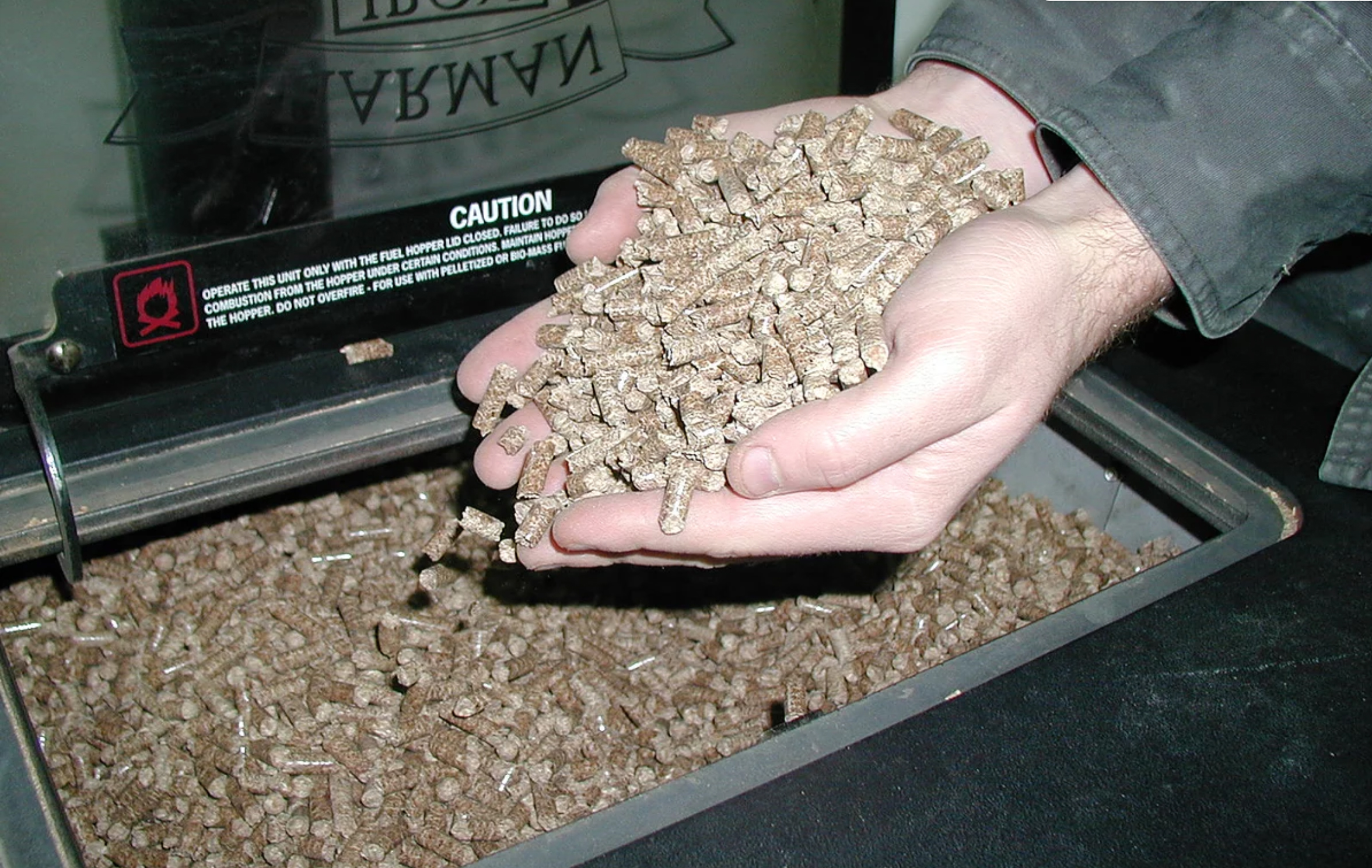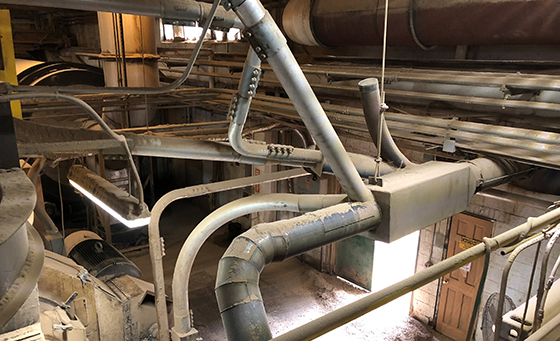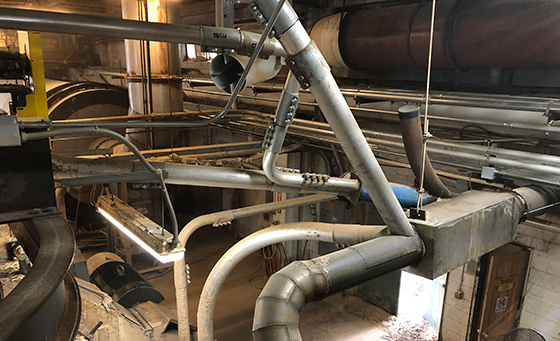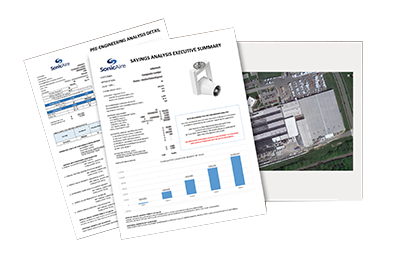“When it comes to controlling combustible dust, the best practice in the wood pellet manufacturing industry is to contain it,” reports Andy Galis, Operations Manager at Greene Team Pellet Fuel Company, “but it’s impossible to catch it all.”
“For all wood pellet manufacturers,” explains Galis, “the number one challenge is controlling combustible dust, especially the dry powder-like dust. Despite our best efforts to contain the dust, it still becomes airborne—and that is where the issue is.”
Dry Dust = Combustible Dust
– Andy Galis, Greene Team Pellet Fuel Company
Galis explains, “We did some calculations for our mill, and even if we contained 99.99% of the dry dust going into the pellet mill, that would still lead to over 130 pounds of dry dust becoming airborne per week from each pellet mill.”
“And this dust is highly flammable. Once moisture content of the dust drops below 25% H2O, you have the chance for an explosion. Our dust typically exits the dryer around 10% H2O. It’s the smallest pieces that escape suction, and these are typically around 3% H2O, making them even more dangerous. Once the dust is that dry, we treat it like gasoline.”
“We used suction lines in as many places as we could,” Galis continues. “We’ve also tried seals, mechanical adjustments, direct suction on equipment, and indirect suction to try to control the dust.”
The Greene Team realized these efforts weren’t enough, so the pellets manufacturer looked for a better solution.
SonicAire Fans Blow Other Solutions Away
“The key to preventing combustible dust events in pellet manufacturing is keeping the airborne dust from settling on elevated horizontal surfaces,” notes Galis. “If an explosion were to happen, that dust gets rattled off the horizontal surface and then could potentially fuel a secondary (typically more dangerous) explosion. The way to prevent this is with SonicAire oscillating fans. We installed four in our facility, and we’re amazed at how clean the overhead areas are staying. There is practically zero dust in the rafters. We couldn’t be happier with the performance of the SonicAire fans. It makes our plant much safer.”
– SonicAire
Custom Engineering
To create this effective system, SonicAire worked with Greene Team on-site to recommend the best location for each fan. “We knew we wanted to get the entire plant covered by the fans’ reach,” notes Galis. “The SonicAire team got back to us quickly, and the cost was lower than expected – and cheap compared to the explosive alternative. We now operate the four fans with our programmable logic controller (PLC) so that they run 100% of the time with few exceptions. When certain areas of the plant are shut down for maintenance, the fans automatically shut down. As soon as that area starts back up, the fans turn on automatically.”


Adjust the slider arrows in the middle of the Before/After photos to see the effect of using SonicAire dust control fans in your facility.
What makes the fans so effective? Half of the equation is the engineered installation. As with the Greene Team’s fans, SonicAire strategically designs the installation of fans for each facility, engineering a custom solution that minimizes the resources required for ongoing maintenance while maximizing results.The second half is BarrierAire™ technology. This proprietary technology forms an air barrier that keeps dust and lint at floor level. The fans prevent upward thermal currents from holding pellet dust in the air, and they use high-velocity airflow to clean overhead areas and prevent dust accumulation. With top-to-bottom cleaning ranges of 0-140°, full 360° oscillation, variable speed control and programmable options, the fans deliver top results.
The Greene Team couldn’t be happier with their results. Galis told SonicAire, “The fans are working really, really well. There are several sawmills near us that should absolutely have SonicAire fans in place. I would be willing to explain the benefits to them, because I believe that much in SonicAire fans, and I care about their facilities as much as our own.”
The SonicAire Solution
As the global leader in dust control, SonicAire can partner with you to recommend the ideal fan system for your pellet manufacturing facility. Your customized solution can mitigate risk and help you maintain cleaner, safer conditions.
To start reaping the benefits of industrial dust control fans, contact SonicAire for your personally engineered solution and quote.

